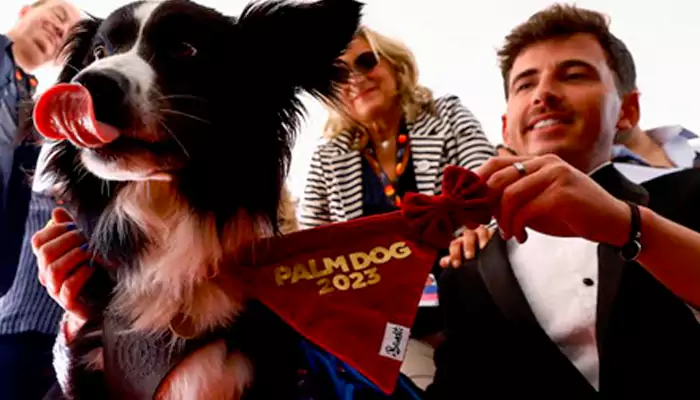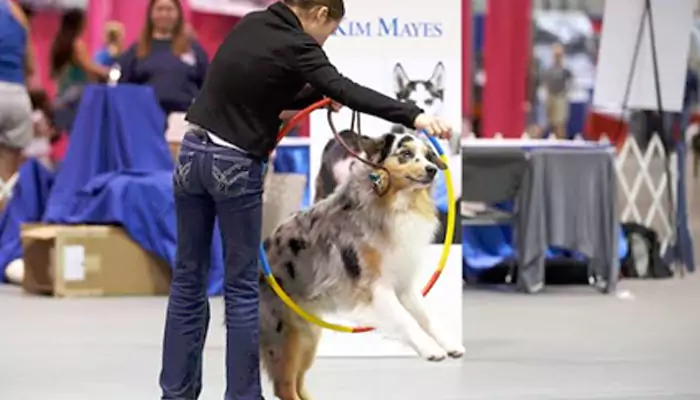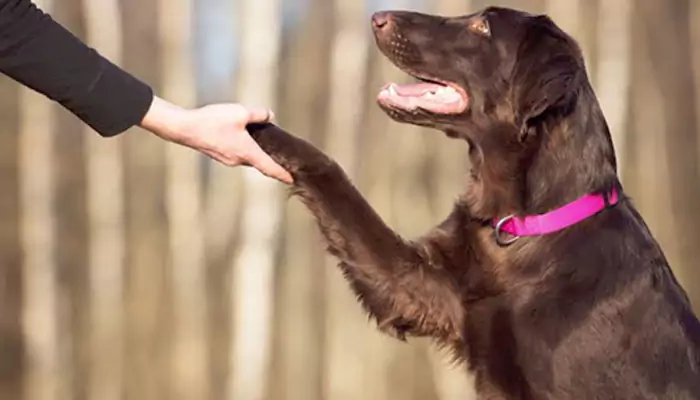Black Dog's Double Win at Cannes: Celebrating Canine Actors and the Palm Dog Award
- Admin
- 1 year ago
- 5 minutes read

"Black Dog," a film depicting a man recently released from prison, who returns to his secluded hometown in China with the intention of clearing it of stray dogs before the Olympics, unexpectedly forms a bond with one of them. The film triumphed at the Cannes Film Festival by winning the "Un Certain Regard" competition on Friday. This marked the second accolade of the day for director Xin, who also received the Palm Dog's red collar earlier for clinching the Grand Jury Prize at a separate event celebrating outstanding canine performances.
In the world of cinema, performances by actors are meticulously analyzed and celebrated. However, a unique category of actors often goes unnoticed: canine actors. These four-legged stars bring an unparalleled charm and authenticity to the screen, captivating audiences with their natural charisma. The Palm Dog award, introduced at the Cannes Film Festival, highlights the significance of canine performances, recognizing the dedication and training that these animal actors undergo. This article delves into the importance of canine actors, the unique Palm Dog award, and the extensive work involved in preparing dogs for their roles in films.
The Palm Dog Award: A Unique Celebration

The Palm Dog award, established in 2001, is a whimsical yet meaningful accolade that honors the best canine performances at the Cannes Film Festival. Named in playful homage to the prestigious Palme d'Or, the award celebrates the contributions of dogs to the art of cinema. Over the years, it has gained significant attention, shining a spotlight on the remarkable talents of canine actors and the trainers who work tirelessly to prepare them for their roles. This recognition not only highlights the essential role of animals in storytelling but also elevates the status of animal actors within the film industry.
The Art of Canine Acting

Canine actors play diverse roles in films, ranging from loyal companions and heroic saviors to comedic sidekicks and emotional anchors. Their performances can evoke a wide range of emotions, adding depth and authenticity to the narrative. Unlike human actors, dogs rely heavily on non-verbal communication, using body language, expressions, and behavior to convey emotions and interact with their human co-stars. This ability to connect with audiences on an emotional level is a testament to the unique talents of canine actors.
Training and Preparation

The training of canine actors is a rigorous process that requires patience, consistency, and a deep understanding of animal behavior. Professional trainers work closely with dogs, employing positive reinforcement techniques to teach them specific actions and behaviors required for their roles. Training sessions are designed to be engaging and enjoyable for the dogs, ensuring that they remain enthusiastic and responsive.
Training a canine actor often begins with basic obedience commands such as sit, stay, come, and heel. Once these foundational skills are mastered, trainers introduce more complex tasks tailored to the requirements of the film. These tasks can include fetching objects, reacting to cues, performing stunts, and interacting with human actors. Consistency and repetition are key, as dogs need to perform their actions reliably on cue during filming.
The Human-Canine Bond

The bond between a canine actor and their trainer is crucial for successful performances. This relationship is built on trust, respect, and mutual understanding. Trainers spend significant time with their canine charges, getting to know their personalities, strengths, and limitations. This deep connection allows trainers to tailor their training methods to each individual dog, ensuring that they perform to the best of their abilities while enjoying the process.
The presence of a trusted trainer on set provides reassurance and support to the canine actor, helping them navigate the often chaotic and unpredictable environment of a film shoot. This bond is evident in the seamless performances that canine actors deliver, showcasing their ability to work harmoniously with human actors and crew members.
Notable Canine Performances

Over the years, many canine actors have delivered memorable performances that have left a lasting impact on audiences. Films like "Lassie," "Old Yeller," and "Beethoven" have become classics, in large part due to the charming and heartwarming performances of their canine stars. More recent films like "The Artist," which won Uggie the Jack Russell Terrier the Palm Dog award in 2011, continue to highlight the vital role of dogs in cinema.
In 2024, the film "Black Dog" garnered attention at the Cannes Film Festival, not only for its compelling narrative but also for the remarkable performance of its canine star. The film, which won the "Un Certain Regard" competition, featured a poignant storyline about a man who befriends a stray dog, bringing attention to the emotional depth that canine actors can bring to a film.
The Palm Dog award and the celebration of canine actors underscore the significant contributions that these four-legged stars make to the world of cinema. Their ability to convey emotions, perform complex tasks, and build meaningful connections with human actors enriches the storytelling experience. The dedication and expertise of trainers ensure that these canine performers are well-prepared and happy in their roles, allowing them to shine on the silver screen. As we continue to celebrate the artistry of cinema, it is essential to recognize and honor the unique talents of canine actors who bring joy, depth, and authenticity to the stories we love.












